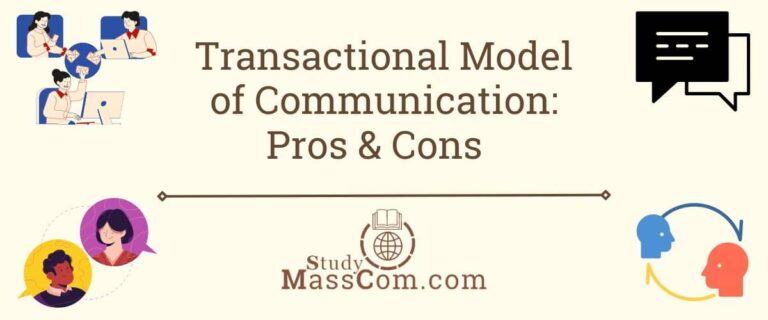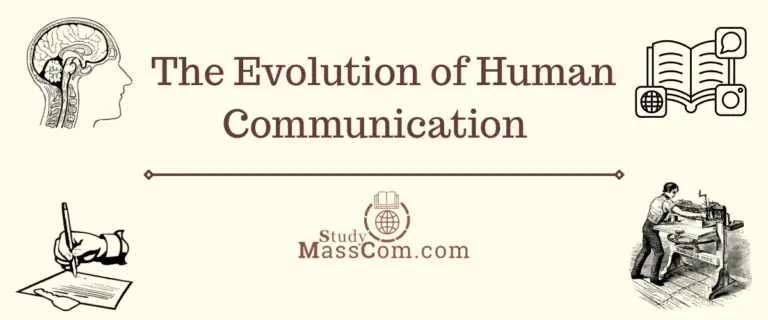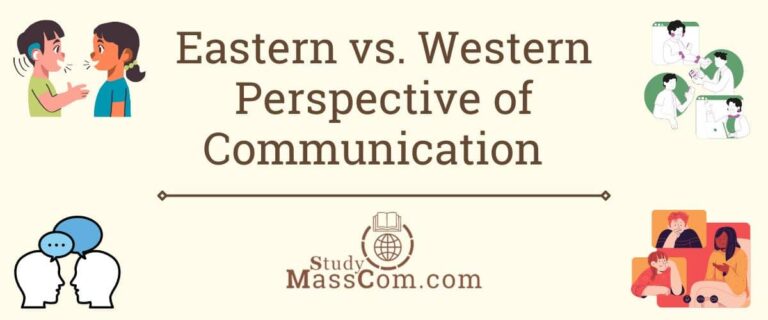Feminist Theory of Media: Unveiling Gender Bias and Empowering Voices
Introduction
The media plays a crucial role in shaping our perceptions, values, and understanding of the world. It serves as a powerful tool for communication, information dissemination, and cultural representation. However, media systems have often been criticized for perpetuating gender inequalities, reinforcing stereotypes, and marginalizing women’s voices. In response to these issues, the feminist theory of media has emerged as a critical lens through which to analyze and challenge the patriarchal structures and biases within media systems. This blog post aims to explore the core concepts of the feminist theory of media and its significance in fostering gender equality and empowering diverse voices.

Understanding Feminist Theory of Media
The feminist theory of media is a multidimensional framework that examines the ways in which media constructs, disseminates, and reinforces gender norms and power dynamics. It aims to deconstruct the underlying biases, stereotypes, and sexist ideologies prevalent in media representations, institutions, and practices. The theory highlights the unequal power relations within media systems and seeks to promote a more inclusive and equitable media landscape.
Key Concepts and Critiques of Feminist Media Theory
Representation and Stereotypes
Feminist theory of media scrutinizes the representation of women in media content, recognizing the pervasive presence of gender stereotypes. Traditional media often depicts women in limited and objectified roles, reinforcing notions of beauty, submissiveness, and domesticity. This perpetuation of stereotypes hinders the portrayal of diverse and authentic female experiences. By challenging these representations, feminist theory aims to encourage more complex and empowering narratives that reflect the reality of women’s lives.
Media Ownership and Control
The theory also analyzes the ownership and control of media institutions, as concentrated ownership can lead to the reinforcement of biased perspectives and exclusionary practices. Feminist theorists emphasize the importance of diversifying ownership and decision-making positions to ensure a broader range of voices and perspectives are represented. Increasing women’s participation at all levels of media production and management is essential for creating an inclusive media system.
Media Production and Gatekeeping
The feminist theory of media explores the role of gatekeepers within media production processes. It questions the biases in editorial decisions, story selection, and sourcing practices that often marginalize women’s perspectives or prioritize male voices. Addressing these biases requires increased awareness, accountability, and structural changes within media organizations to challenge the status quo and amplify diverse voices.
Audiences and Reception
The feminist theory acknowledges the agency of media audiences and examines how media consumption shapes and reinforces gendered ideologies. It highlights the importance of critical media literacy, encouraging individuals to question and challenge the narratives presented to them. Empowering audiences to recognize and resist the media’s gender biases can contribute to dismantling existing power imbalances.
Explore some important mass communication theories and models.
Impacts and Significance of Feminist Media
The feminist perspective of media offers several benefits and impacts that include:
- Increased Gender Equality
- Amplification of Marginalized Voices
- Empowerment and Agency
- Cultural Transformation
Each of these points is discussed further below.
Increased Gender Equality
By exposing and challenging gender biases and stereotypes, feminist media theory contributes to the advancement of gender equality. It paves the way for more inclusive narratives, dismantles traditional power structures, and promotes the visibility and representation of diverse women’s experiences.
Amplification of Marginalized Voices
The theory provides a platform for marginalized voices, including those of women of color, LGBTQ+ individuals, and individuals with intersecting identities. It promotes the representation and recognition of diverse perspectives, ensuring that media narratives reflect the complexity and diversity of society.
Empowerment and Agency
This theory of media empowers individuals by encouraging critical thinking, media literacy, and active engagement with media content. It enables audiences to challenge harmful narratives, resist gender stereotypes, and demand more inclusive representations.
Cultural Transformation
By challenging and transforming media systems, feminist theory contributes to broader cultural transformations. It encourages a shift in societal attitudes, norms, and values toward a greater perspective.
Example of Feminist Media Theory
Let’s delve into an example that illustrates the application of the feminist theory of the media system.
The #MeToo Movement
The #MeToo movement serves as a powerful and tangible example of the feminist theory of media in action. Initiated in 2006 by activist Tarana Burke, the movement gained significant momentum in 2017 when actress Alyssa Milano encouraged women to share their experiences of sexual harassment and assault using the hashtag #MeToo. What followed was a global wave of testimonies from individuals across various industries, exposing the pervasive nature of gender-based violence.
The #MeToo movement exemplifies the feminist theory of media in several ways that include:
- Amplification of Marginalized Voices
- Disruption of Stereotypes and Power Structures
- Media Accountability and Cultural Transformation
- Societal Awareness and Activism
Let’s delve deeper into these aspects of the #MeToo movement in relation to feminist media theory.
Amplification of Marginalized Voices
The movement provided a platform for women to share their stories, many of which had been silenced or dismissed in the past. Through social media platforms, women were able to bypass traditional gatekeepers and directly address a global audience. This enabled the voices of marginalized women, including those from different racial, ethnic, and socio-economic backgrounds, to be heard and validated.
Disruption of Stereotypes and Power Structures
The movement challenged the prevalent stereotypes that blamed and stigmatized survivors of sexual harassment and assault. Instead, it placed the responsibility on perpetrators and emphasized the systemic nature of gender-based violence. Media coverage played a crucial role in shifting the narrative by focusing on the experiences and perspectives of survivors, thereby undermining victim-blaming attitudes.
Media Accountability and Cultural Transformation
The extensive media coverage of the #MeToo movement exposed the complicity of media institutions in perpetuating a culture of silence and normalization of sexual misconduct. Journalists and news organizations were forced to confront their own biases and complicity in allowing such behavior to persist. This resulted in a reevaluation of media practices, with many outlets adopting more responsible reporting guidelines and implementing policies to address workplace harassment within their own organizations.
Societal Awareness and Activism
The widespread visibility of the #MeToo movement sparked a broader societal conversation about gender-based violence and the need for change. It mobilized not only survivors but also allies, organizations, and policymakers to address issues such as consent, workplace harassment, and the importance of supportive networks. The movement fostered a sense of solidarity among survivors and encouraged individuals to challenge the existing power structures and demand accountability.
Theoretical Works on Feminist Theory
In addition to the practical examples, there are several significant theoretical works within the feminist theory of the media system. These works have contributed to our understanding of gender biases, power dynamics, and the impact of media on shaping social perceptions. Here are a few notable theoretical works:
Gender, Race, and Class in Media by Gail Dines and Jean McMahon Humez
This book examines the intersectionality of gender, race, and class in media representations. It explores how media perpetuate stereotypes, reinforce inequalities, and marginalize certain groups. It also highlights the importance of media literacy and critical analysis in challenging these representations.
Feminist Media Studies edited by Liesbet van Zoonen
This collection of essays explores various aspects of feminist media studies, including representation, production, reception, and activism. It delves into issues such as feminist media activism, media ownership, and the politics of representation, offering a comprehensive overview of the field.
The Feminist Spectator as Critic by Jill Dolan
This book focuses on the role of the feminist spectator in analyzing and critiquing media and performance. It discusses the importance of feminist criticism in challenging dominant narratives, advocating for diverse representations, and supporting feminist artists and creators.
Gender and the Media by Rosalind Gill
This work provides a comprehensive analysis of gender and media, examining how media representations of femininity and masculinity influence social norms and power structures. It critically examines advertising, reality television, news media, and digital media, offering insights into the complex ways in which gender operates within media systems.
Mediating Feminism: Women’s Activism and the Internet by Michelle M. Lazar
This book explores the intersection of feminism and digital media, focusing on the ways in which women utilize online platforms for activism and community building. It examines the potential of digital media in challenging traditional power structures and amplifying marginalized voices.
These theoretical works, among others, have contributed to the development of the feminist theory of media by shedding light on the unequal power relations, biases, and stereotypes present within media systems.
Discover the advantages and disadvantages of the Magic Bullet Theory.
Conclusion
In conclusion, the feminist theory of media provides a critical lens through which we can analyze, challenge, and transform the gender biases and power dynamics within media. It highlights the importance of representation, ownership, production practices, and audience reception in fostering a more inclusive and equitable media landscape.
By examining the representation of women, questioning stereotypes, and amplifying marginalized voices, feminist theory challenges the traditional narratives and power structures that perpetuate gender inequality. It emphasizes the need for media ownership and decision-making positions to reflect diverse perspectives, and it encourages media organizations to be accountable for their biases and practices.
You can also read about the Agenda-Setting Theory and its strengths and weaknesses.
FAQs
The feminist theory of media and culture is a framework that examines the role of gender in shaping the production, representation, and reception of media and cultural artifacts. It seeks to understand how media and popular culture contribute to the construction of gender norms, power dynamics, and inequalities in society.
Feminist media theory emerged in response to the recognition that traditional media often reinforced patriarchal ideologies, objectified women, and marginalized their voices and perspectives. It encompasses a range of perspectives and approaches, but some common themes include:
1. Representation and Stereotyping: Feminist media theory explores how women and gender are portrayed in media. It examines the prevalence of stereotypes, such as the objectification of women’s bodies, the portrayal of women as passive objects of desire, or the limited range of roles and narratives available to women.
2. Media Production and Ownership: Feminist scholars analyze the structures of media industries, including who produces and controls media content. They examine how these structures shape the representation of women, as well as the opportunities available to women in media professions.
3. Audiences and Reception: Feminist theory also focuses on how media messages are received and interpreted by audiences. It considers how media consumption contributes to the formation of individual and collective identities, as well as how audiences negotiate, resist, or reproduce gendered meanings in media.
4. Intersectionality: Feminist media theory acknowledges that gender does not exist in isolation from other social categories such as race, class, sexuality, and ability. It emphasizes the interconnectedness of various forms of oppression and examines how intersecting identities shape media representation and experiences.
5. Activism and Media Interventions: Many feminist media theorists are actively engaged in media activism and advocate for alternative forms of media production and representation. They seek to challenge dominant narratives, amplify marginalized voices, and promote more inclusive and diverse media landscapes.
Overall, the feminist theory of media and culture aims to critically analyze the power dynamics inherent in media and cultural production, challenge gender-based inequalities, and envision more equitable and inclusive representations and practices.
The feminist view of media sociology examines the intersection of gender and media within the broader field of sociology. It focuses on how gender shapes and is shaped by media institutions, practices, and representations, and how these dynamics influence social relationships and power structures.
Feminist media sociology analyzes various aspects of media, including the production, distribution, and consumption of media content, as well as the impact of media on social attitudes, behaviors, and identities. It seeks to uncover and challenge the ways in which media contribute to the perpetuation of gender inequalities and the reinforcement of patriarchal norms.
Some key perspectives and themes within feminist media sociology include:
1. Power and Representation: Feminist scholars explore how media representations construct and reinforce gendered power dynamics. They examine the ways in which women and men are portrayed, the prevalence of stereotypes and tropes, and the implications of these representations for social attitudes and behaviors.
2. Media Industries and Labor: Feminist analysis of media industries looks at the gendered division of labor within media production and the organizational structures that perpetuate inequalities. It investigates issues such as unequal pay, occupational segregation, and limited opportunities for women in key positions of power.
3. Audience Studies: Feminist media sociology also examines how audiences interpret and make meaning from media content. It investigates how gendered identities, experiences, and social contexts influence the reception and negotiation of media messages.
4. Intersectionality: Like other branches of feminism, feminist media sociology recognizes the importance of intersectionality. It acknowledges that gender intersects with other social categories such as race, class, sexuality, and ability, and explores how these intersecting identities shape media experiences and outcomes.
5. Social Movements and Activism: Feminist media sociology often engages with media activism and the ways in which feminist movements use media to challenge dominant narratives, advocate for social change, and amplify marginalized voices.






